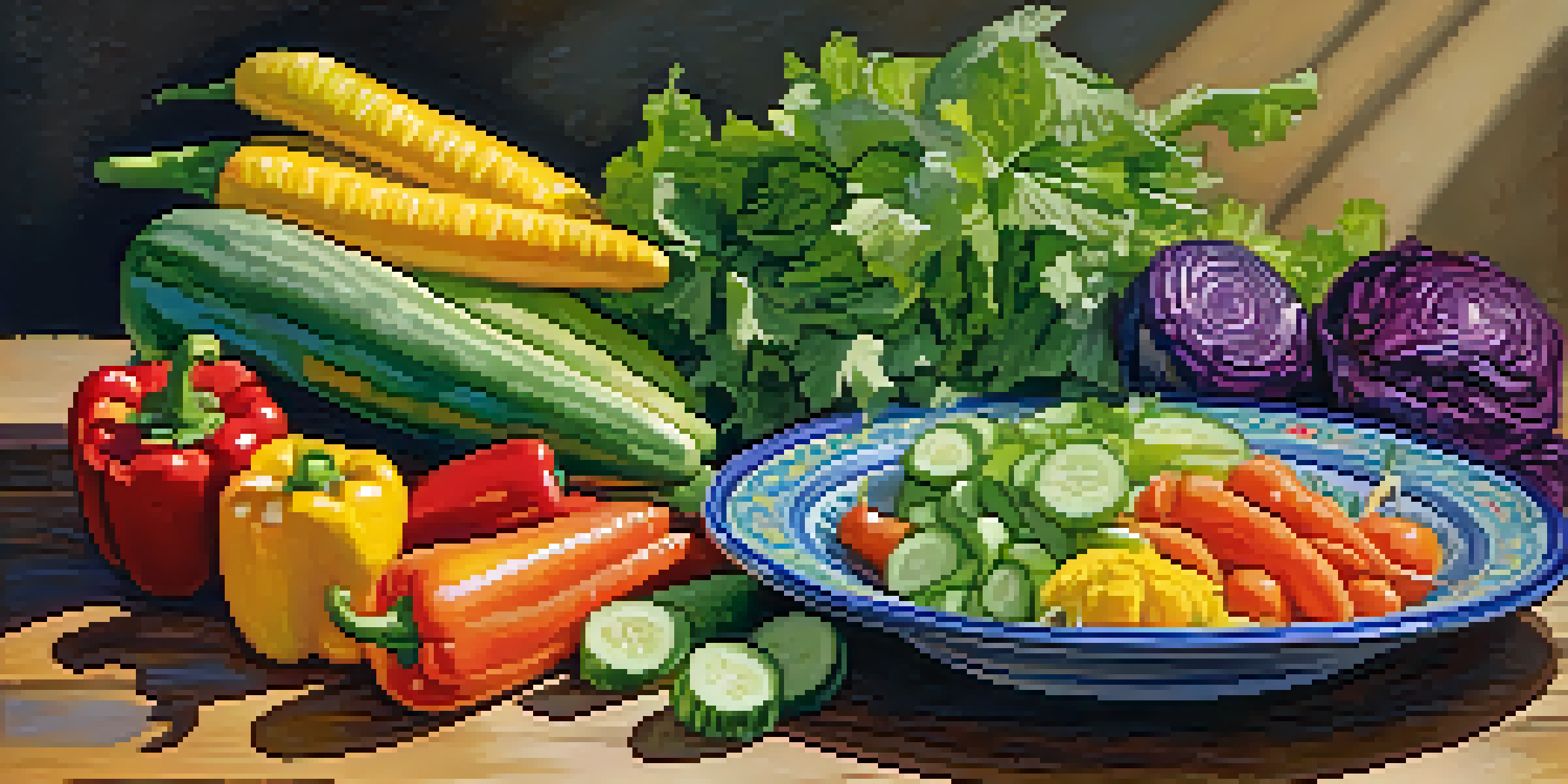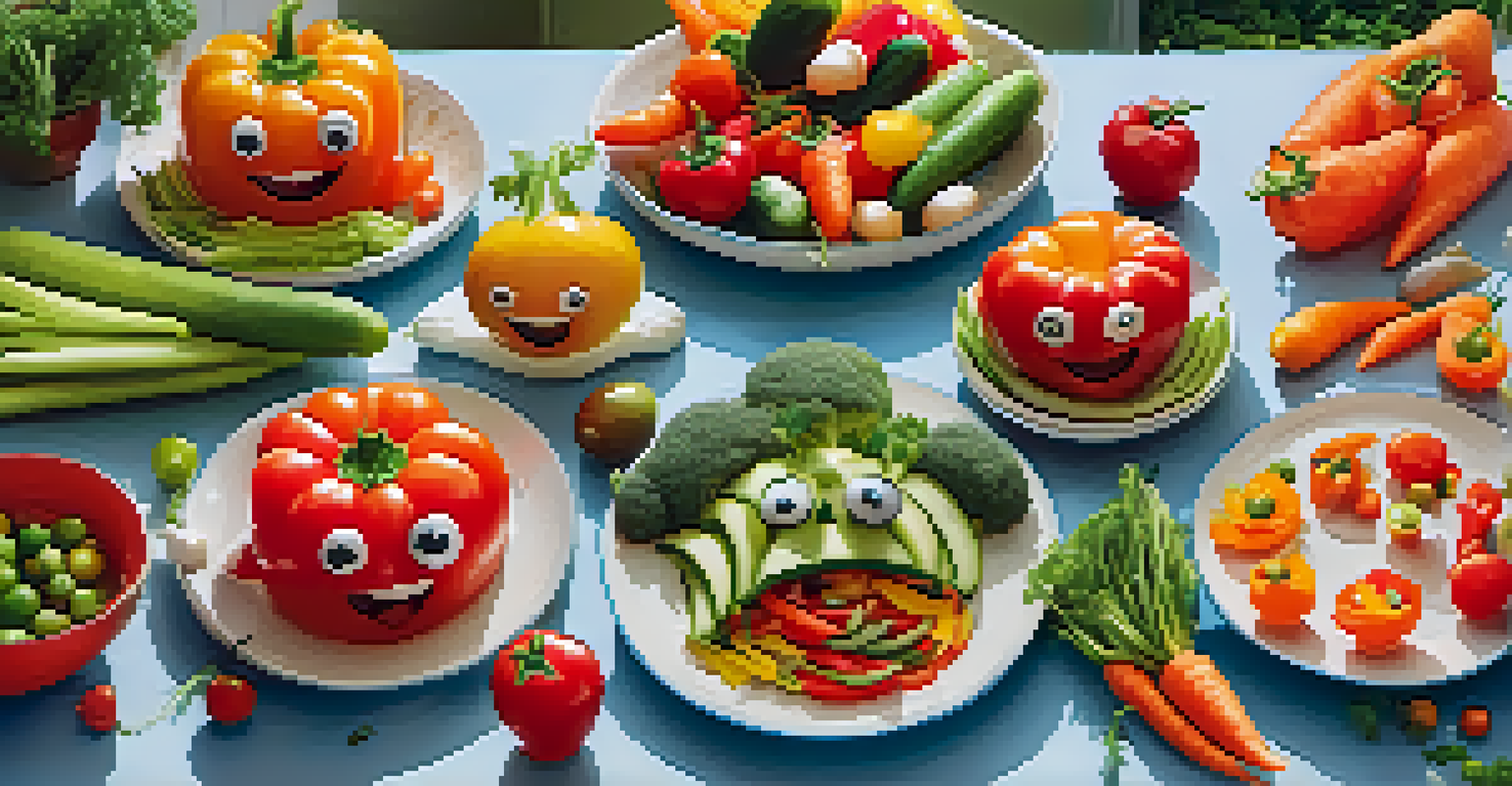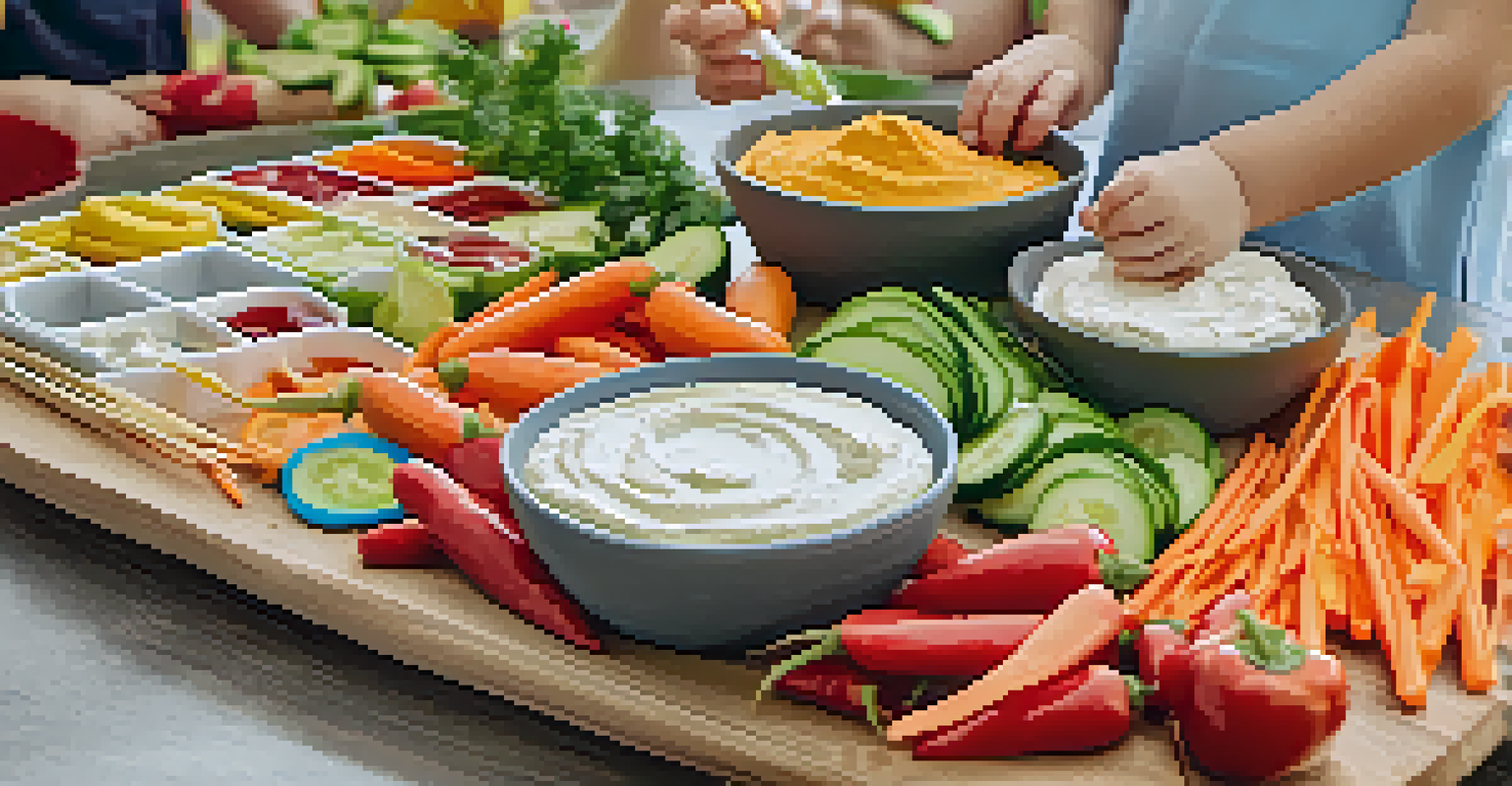Fun Ways to Serve Raw Veggies: Engaging Kids in Nutrition

Create a Colorful Veggie Rainbow Plate
Kids are naturally drawn to bright colors, so why not use that to your advantage? Arrange a variety of raw veggies in a rainbow pattern on a plate, using red bell peppers, orange carrots, yellow cucumbers, green celery, blue/purple cabbage, and more. This vibrant display not only makes the veggies visually appealing but also introduces kids to different colors and nutrients.
You don't have to cook fancy or complicated masterpieces – just good food from fresh ingredients.
To make it even more engaging, you can encourage kids to identify each color and vegetable as they eat. You could turn it into a fun game by asking them to guess the color of the next veggie before they take a bite. This not only promotes healthy eating but also builds their knowledge about nutrition in a playful way.
Additionally, consider pairing the rainbow plate with a selection of dips like hummus or yogurt-based dressings. This adds a fun element and encourages kids to explore different flavors, making raw veggies more enticing and enjoyable.
Veggie Monsters: Fun Shapes and Faces
Transform raw veggies into silly faces or creatures to spark your child's imagination! Use cookie cutters to create fun shapes from cucumbers, carrots, and bell peppers. You can then arrange these shapes on a plate to form various monster faces, complete with eyes made from olives or cherry tomatoes.

This hands-on activity not only allows kids to get creative but also encourages them to eat their creations. When they see a 'veggie monster' smiling back at them, they might be more inclined to take a bite. Plus, it opens the door for discussions about the importance of eating different types of foods.
Engage Kids with Colorful Veggies
Creating visually appealing veggie dishes, like a rainbow plate, helps spark children's interest in healthy eating.
You can even involve kids in the preparation process. Let them choose which veggies to use and help assemble their veggie monsters. This collaboration can boost their interest in nutrition and make them feel proud of their healthy snack.
Veggie Dippers: Fun with Dips and Salsas
Kids love to dip, so why not make raw veggies a part of that excitement? Set up a DIY dipping station with a variety of healthy options like hummus, guacamole, yogurt ranch, or salsa. This interactive approach allows kids to customize their snacks, leading to increased interest in the veggies they choose to dip.
Let food be thy medicine and medicine be thy food.
Encourage kids to try different combinations, such as carrot sticks with guacamole or bell pepper strips with hummus. By experimenting with flavors, they can discover what they enjoy most, making veggies a more appealing option. The hands-on experience of dipping also adds an element of fun to healthy eating.
You can even incorporate a taste test challenge. Present several dips and have kids vote on their favorites, turning snack time into a fun and engaging activity that promotes healthy choices.
Veggie Art: Creative Culinary Projects
Encourage creativity by having kids create edible art with raw veggies. They can use sliced cucumbers, carrots, and cherry tomatoes to craft imaginative scenes or characters on a plate. This not only makes veggies more appealing but also turns mealtime into a fun and artistic experience.
Consider themes for the veggie art, such as creating animals, landscapes, or even their favorite cartoon characters. This playful approach can lead to conversations about nutrition and the importance of eating healthy foods, all while sparking their imagination.
Make Veggies Fun with Dips
Setting up a DIY dipping station encourages kids to explore different flavors while enjoying raw veggies.
After creating their veggie art, kids will likely be more excited to eat their creations. You could even take photos of their masterpieces before they dig in, making it a memorable experience that integrates fun into healthy eating.
Veggie Skewers: A Hands-On Snack Experience
Veggie skewers are a fantastic way to turn raw veggies into a fun, hands-on snack. Provide kids with wooden skewers and a selection of colorful veggies, like cherry tomatoes, cucumber slices, bell pepper chunks, and even some cheese cubes. Let them create their own veggie kabobs, encouraging creativity and personalization.
This interactive activity not only makes eating veggies exciting but also allows kids to experiment with different combinations and flavors. They can create rainbow skewers or even themed ones, like 'garden' or 'party', making the experience even more engaging.
Skewering veggies can also be a great opportunity to discuss food safety and the importance of handling food properly. As they enjoy their tasty creations, they'll be learning valuable lessons about nutrition and health.
Surprise Veggie Treats: Sneaky Nutrition
Sometimes, kids are more willing to eat veggies when they’re cleverly disguised in treats! Consider incorporating finely grated or blended vegetables into muffins, pancakes, or smoothies. For instance, adding spinach or carrot puree to a fruit smoothie can make it more nutritious without compromising taste.
This approach can be a great way to introduce new veggies into their diet without the fuss. When kids enjoy their favorite treats, they won’t even realize they’re consuming beneficial nutrients that they might typically shy away from.
Transform Veggies into Art
Encouraging kids to create edible art with vegetables makes healthy eating a fun and imaginative experience.
To make it even more engaging, involve kids in the cooking process. Let them help mix ingredients or choose which vegetables to add, making it a fun family activity that promotes healthy eating habits.
Themed Snack Days: Make Veggies a Celebration
Create excitement around raw veggies by organizing themed snack days. For example, you could have a 'Taco Tuesday' where kids can assemble their own veggie tacos using lettuce leaves, diced tomatoes, and shredded carrots. This not only makes eating veggies fun but also encourages kids to explore different culinary cultures.
By introducing themed days, you can also incorporate educational elements, such as teaching kids about the origin of the veggies they’re using. This instills a sense of curiosity about food and the importance of nutrition in a way that feels like an adventure rather than a chore.

Don't forget to let kids get creative with their themes! Allow them to suggest ideas or themes that interest them, making it a collaborative effort that fosters enthusiasm and excitement about healthy eating.